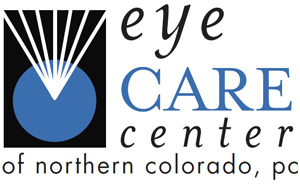Corneal Disorders We Treat
At the Eye Care Center of Northern Colorado we offer the best specialized eye care for your cornea and laser vision correction needs. Not only do we provide traditional solutions for existing or chronic corneal problems, but our patients experience innovative corneal care and treatments with less-invasive solutions that increase safety, or end-stage solutions when traditional treatments have failed.
Keratoconus
Generally glasses are used to correct vision in keratoconic patients. Rigid contact lenses may be used if good vision cannot be achieved with glasses. RGPs are contoured to address the cone-like shape of the cornea, thereby improving vision. A proper fitting lens is vital in providing a comfortable fit and adequate vision.
A relatively new option for keratoconic patients is placing crescent-shaped acrylic inserts (Intacs) in the midperiphery of the cornea. This has shown to be an effective treatment for some keratoconic patients.
Pterygium
Our modern methods of pterygium surgery greatly reduce the incidence of recurrence and have a better cosmetic outcome. Dr. Verner is a national speaker and advocate for the use of amniotic membrane in ocular surface reconstruction. This method includes primary excision, polishing of the corneal bed, and precise application of an amniotic membrane transplant (AMT) graft in the bed of the former pterygium. While reports vary, such a method generally reduces the risk of recurrence from 50 percent with just primary excision down below 5 percent, and usually reduces post-operative pain as well.
External & Infectious Eye Disease
Patients with significant recurrent or chronic ocular surface problems can represent a diagnostic challenge. We welcome such challenges and are willing to run full evaluations and tests to get to the bottom of these cases and their systemic causes. Recently diagnosed cases include:
- Acanthamoeba keratitis
- Thygeson’s SPK’s
- Nodular scleritis due to undiagnosed Polyarteritis Nodosa
- Dry Eye due to Wegner’s granulomatosis
- Dacryocystocele with preseptal cellulitis
- Ocular cicatricial pemphigoid and ankyloblepharon
- Corneal and conjunctival neoplasms
- Bacterial corneal ulcers
- Fungal corneal ulcers
- Viral corneal disease
Infectious disease cases can be taken on an emergency basis. We will send cultures, microscopic, serological, and tissue tests as indicated and manage fortified topical or injected ocular medications and systemic medications as needed in these cases.
